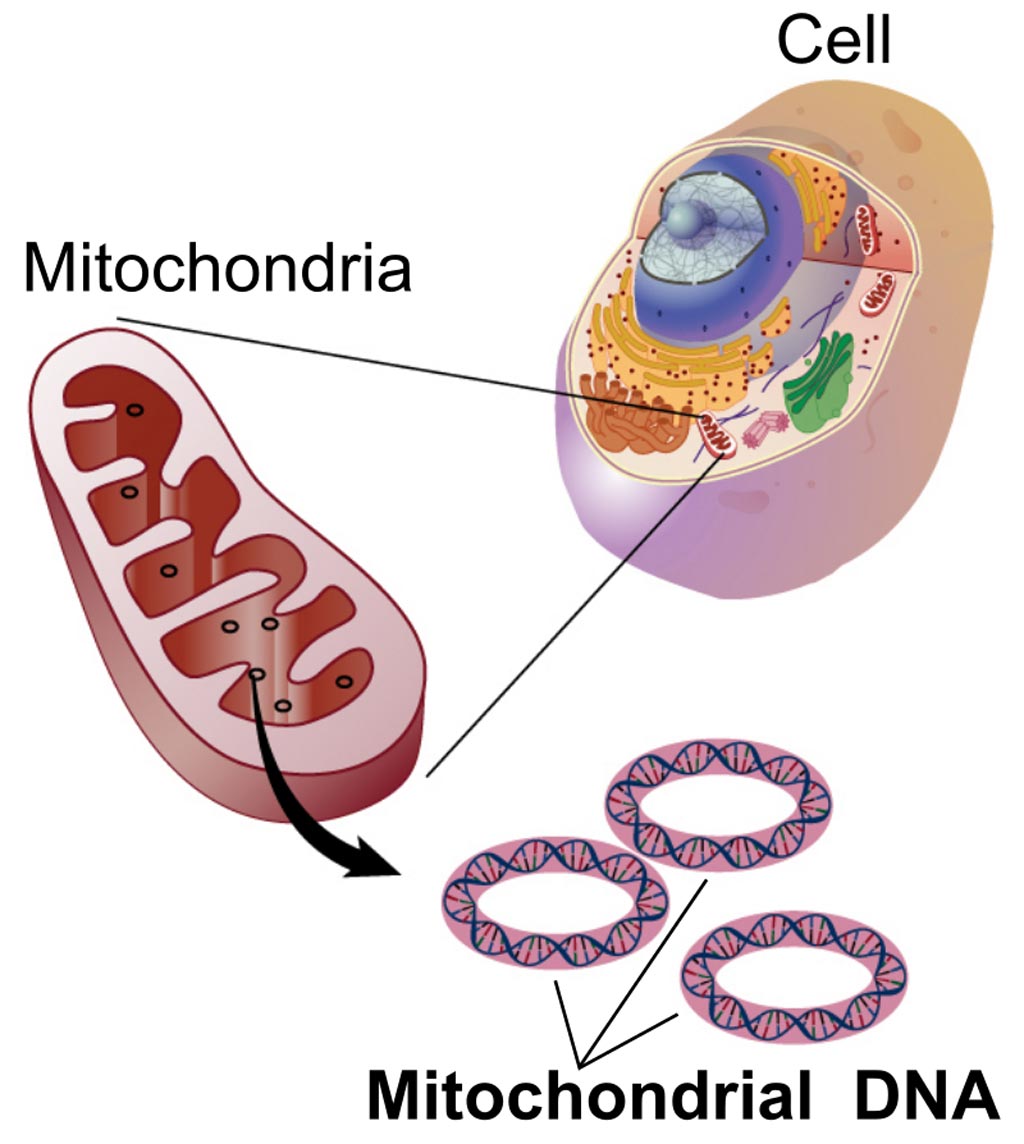Mitochondrial DNA Copy Number Improves CVD Risk Prediction
By LabMedica International staff writers
Posted on 24 Oct 2017
Mitochondrial DNA copy number (mtDNA-CN), which represents the number of mitochondria per cell and number of mitochondrial genomes per mitochondrion, is an indirect biomarker of mitochondrial function that has been identified as an independent predictor of cardiovascular disease (CVD) risk.Posted on 24 Oct 2017
Mitochondrial degradation and failure are core components of the aging process and may play a key role in atherosclerotic cardiovascular disease. To examine this possibility, investigators at Johns Hopkins University (Baltimore, MD, USA) sought to determine whether mtDNA-CN, measured in an easily accessible tissue (buffy coat/circulating leukocytes), could improve risk classification for CVD and help guide initiation of statin therapy for primary prevention of CVD.

Image: Mitochondrial DNA comprises the small circular chromosome found inside the mitochondria (Photo courtesy of the U.S. National Human Genome Research Institute).
The investigators collected genetic data from 21,870 participants compiled by the Atherosclerosis Risk in Communities Study (ARIC), The Cardiovascular Health Study, and the Multi-Ethnic Study of Atherosclerosis. They measured the mitochondrial DNA levels relative to nuclear DNA levels, and then added that value as a risk factor to the American College of Cardiology/American Heart Association's Heart Risk Calculator. In another study, they measured the mitochondrial DNA copy number of 11, 093 participants in the ARIC study. MtDNA copy number was calculated from probe intensities of mitochondrial single nucleotide polymorphisms (SNP) on the Affymetrix (Santa Clara, CA, USA) Genome-Wide Human SNP Array 6.0.
Results revealed that over the course of 20.4 years, 361 ARIC participants suffered sudden cardiac death. After adjusting for other risk factors, it was evident that participants with relatively low mitochondrial DNA copy numbers were at the highest risk for sudden cardiac death. Furthermore, addition of mitochondrial DNA copy number to the 2013 American College of Cardiology/American Heart Association Pooled Cohorts Equations for estimating 10-year atherosclerotic CVD risk was associated with significant improvement in risk classification and sensitivity and specificity for the 2013 American College of Cardiology/American Heart Association recommendations on initiating statin therapy.
"We believe the mitochondrial DNA copy number is a novel risk factor for cardiovascular disease, in addition to known predictors like LDL, total cholesterol, and blood pressure, and it adds sensitivity and specificity to whether or not you should be taking a statin," said senior author Dr. Dan Arking, associate professor of medicine at Johns Hopkins University. "This is important because though statins are great drugs and they clearly lower the risk of heart disease, there are side effects and costs associated with taking them, including muscle pain, liver damage, and neurological effects."
"Having mitochondrial DNA as a potential biomarker is very useful because we can use it to develop tools that accurately identify the groups that are at risk," said Dr. Arking. "Essentially two out of every three people who experience sudden cardiac death show no symptoms that could have warned their physician of their risk. That is why our group fervently looked for genetic markers to identify those people at higher risk."
The investigators discussed the link between mtDNA-CN and CVD in two papers: the June 30, 2017, online edition of the European Heart Journal and the October 11, 2017, online edition of the journal JAMA Cardiology.
Related Links:
Johns Hopkins University
Affymetrix













